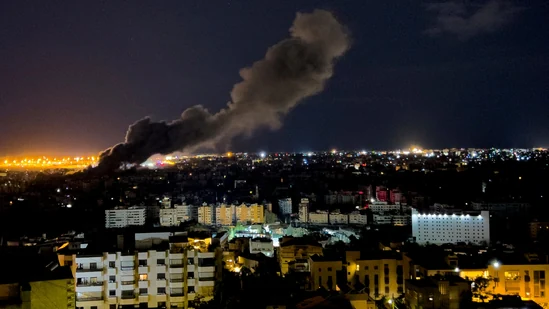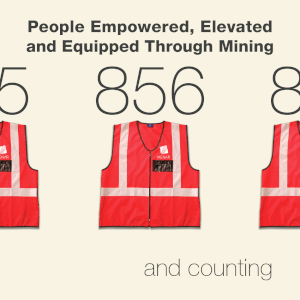Mirna Fahmy- Diplomatic Inside
After the assassination of Hezbollah’s leader Hassan Nasrallah on September 27, 2024, three days later, Israel gathered its troops and launched a ground operation towards Southern Lebanon. He was targeted by the Israeli strike in his location in Dahieh, a predominantly Shia Muslim suburb in the south of Beirut beneath six buildings underground. Israeli Channel 12 reports that he died of suffocation in an unventilated bunker, which is why his body was recovered intact from the rubble. Toxic gases from the explosions entered the room where he was staying, causing his gradual death.
He died with his daughter Zeinab along with the group’s millions of dollars’ money that was acting as their central bank.
This military action, described by the Israel Defense Forces (IDF) as “limited, localised, and targeted,” aimed to dismantle Hezbollah’s infrastructure, which Israel claims poses an immediate threat to its northern communities. The operation has been given the name “Northern Arrows”.
The Lebanese army has withdrawn from several locations along the southern border, according to Reuters.
On October 2, 2024, Avichay Adraee, the Lieutenant Colonel in the Israel Defence Forces who serves as the head of the Arab media division of the IDF Spokesperson’s Unit, issued an “evacuation order in southern Lebanon” on his X account.
Warning further, Adraee says that Hezbollah’s activities force the IDF to act against it forcefully. The IDF does not intend to harm the citizens, so for their own safety, they must evacuate their homes immediately and head north of the Awali River.
“Anyone who is near Hezbollah elements, installations, and combat equipment is putting their life at risk. Any house used by Hezbollah for its military needs is expected to be targeted.”
The decision to initiate ground operations came after a series of escalating tensions and military exchanges between Israel and Israel. This has included the killing of at least six other Hezbollah leaders by the Israeli airstrikes so that no one could ever succeed Nasrallah. The strikes were part of a broader military operation targeting Hezbollah’s command structure and infrastructure in Lebanon, particularly in southern Beirut, where Nasrallah was killed.
Israeli officials indicated that the operation was not just a response to past provocations but also a strategic move to ensure the safety of Israeli civilians returning to northern Israel after being displaced due to ongoing hostilities.
In response to what was happening to Hezbollah from eliminations, the Supreme Leader of Iran, Ali Khamenei, posted several times on his X account that Hezbollah is victor and the Zionism regime must be eliminated by all means.
Two days before Nasrallah’s death, Mohamad Ali El Husseini, a Saudi-Lebanese an Imam researcher and Secretary General of the Arab Islamic Council who was a close friend with Hassan Nasrallah a long time ago before he became the leader of Hezbollah, said in an interview with the Al-Arabiya channel that “Iran, which bought him in the past, has sold him today, and he has to write his will because he will be Israel’s next target.”.
Following Nasrallah, Hezbollah has sworn in its new leader, Hashem Safieddine, who is Nasrallah’s cousin. His son is married to the daughter of the former Quds Force commander, Qassem Soleimani, who was assassinated in a U.S. drone strike ordered by then the US-President Donald Trump.
“How many hours does Safieddine have until Israel kills him?” went viral on social media upon Hezbollah’s announcement.
“If the Israelis want to enter on a ground offensive, the forces of resistance are ready in order to begin a ground confrontation and a ground battle,” Hezbollah’s deputy leader Sheikh Naim Qassem said in a posted video while sweating, shivering, and cluttering his words.
“We have prepared, and we are ready. With God’s support and with faith in God, we are confident that the Israeli enemy will not achieve its objectives, and we will be victorious after this battle.”
Opinions and divisions:
There are diverse perspectives on Nasrallah’s death, with some individuals strongly opposing it while others express their support.
Some have posted their happiness that Lebanon is free again and it is time for its people to rise along with their Lebanese army and take their country’s safety back from Hezbollah, who has caused chaos in the entire country and expelled many natives from their homes.
“On behalf of the millions of Lebanese Christians around the world, THANK YOU, Israel! If we want peace between Lebanon and Israel, Hezbollah must be completely destroyed!” Brigitte Gabriel, Lebanese-American activist and author said in a video posted on her X account.
Gabriel, who fled Lebanon when she was a teenager during the Lebanese civil war, has always been advocating for Israel to free Lebanon from Muslim militias who caused her and her family’s suffering. She started voting for Israel because Israel took her heavily injured mother into a hospital in one of their cities to get treated.
Many Arabs from Saudi Arabia and the United Arab Emirates were applauding for what Israel has done to Nasrallah and other Hezbollah’s leaders. Also, Syrians were seen on videos on social media celebrating because finally the one who was working for Assad’s regime executing many children and citizens is no longer existing.
On the other side, many people from the Arab world, either Lebanese or not, were criticising Israel’s action against Nasrallah. Some named it a “Martyr” and said that he has the right to indulge attacks on Israel that are occupying Palestine and killing Palestinians.
Besides Iran and Iraq, the Lebanese government has issued a mourning for three days on the assassination of Hassan Nasrallah.
Hezbollah’s support within Lebanon has become limited, especially after being blamed for the 2020 Beirut port explosion and the obstruction of accountability efforts. According to a 2024 Arab Barometer survey, 55 percent of Lebanese have “no trust at all” in the group.
A brief history:
When many Palestinians were expelled outside Palestine after Israel formed its state in 1948, many of them got scattered around the world. In Lebanon, in particular, it didn’t go well. The influx of Palestinian refugees and the establishment of the Palestine Liberation Organisation (PLO) in Lebanon created a “state within a state.” The PLO’s military operations against Israel from Lebanese territory led to retaliatory Israeli attacks, further destabilising the situation and polarising Lebanese society along sectarian lines. Many Christians who are the majority opposed the PLO’s presence, while many Muslims supported it, leading to violent confrontations.
In addition, economic inequalities and regional disparities fuelled discontent among various groups. The Shiite community, in particular, faced significant socioeconomic challenges, which were exacerbated by the war and contributed to their alignment with various militias seeking greater political power.
On April 13, 1975, a civil war erupted, and the Switzerland of the Middle East became a calamity.
This has driven Israel to invade Lebanon. In response to Palestinian attacks from Lebanese territory, particularly by the PLO in 1978, Israel launched its first operation on Lebanon. Israel aimed to establish a buffer zone in southern Lebanon to prevent further cross-border attacks. This operation led to the establishment of the United Nations Interim Force in Lebanon (UNIFIL) to maintain peace in the region. But this didn’t go well.
On June 6, 1982, Israel received the same attacks again, so it launched its second attack with an objective to eliminate PLO bases in Lebanon and secure its northern border. The invasion resulted in a siege of Beirut, leading to the expulsion of PLO leadership from Lebanon and significant civilian casualties. It also catalysed the rise of Hezbollah as a major militant group opposing Israeli presence in southern Lebanon.
Hezbollah, meaning “Party of God,” emerged from a coalition of Shiite clerics and militants who sought to resist Israeli occupation and assert Shiite political power in a country where they had historically been marginalised. They are Iran’s proxy in Lebanon and carry out various attacks in Lebanon, Syria, and Iraq.
Because of the same reasons, Israel entered Lebanon again in 2006.
About 90% of those living in southern Lebanon’s Christian villages have fled their homes amid the conflict between Israel and Hezbollah, according to Aid to the Church in Need (ACN), a Christian advocacy organisation overseen by the Catholic Church. The civil war that was from 1975 till 1990 resulted in an estimated 150,000 fatalities and led to the exodus of almost one million people (two-thirds) from Lebanon.
Hezbollah has engaged in violent confrontations with Christian communities. For example, in August 2021, clashes erupted when residents of the Druze town of Chouya confronted a Hezbollah truck preparing to launch rockets against Israel. Hezbollah is suspected of assassinating Elias Hasrouni, a member of the Lebanese Forces, a Christian political party.
Led by Nasrallah, he is alleged to have orchestrated the assassination of prominent Lebanese figures, including former Prime Minister Rafic Hariri, which resulted in significant civilian casualties.
Up till the moment, it is unknown what will be the fate of southern Lebanon after the latest Israeli operation in late September and early October 2024. Some analysts claim that Israel might put the entire region under its territory’s borders to further stop any attacks from this region.
In the past days, the United Nations High Commissioner for Refugees announced on Friday, September 27 that more than 30,000 people, most of them Syrians, crossed from Lebanon into Syria during the past three days, amid the escalation of Israeli attacks on Lebanon, which claimed hundreds of lives and increased fears about the outbreak of a regional war.
Gonzalo Vargas Llosa, UNHCR representative in Syria, said that about 80% of those crossing the border are Syrians, and about 20% are Lebanese.
Lebanese are praying for Lebanon’s safety amid all these exchange heavy air strikes killing hundreds of citizens.


